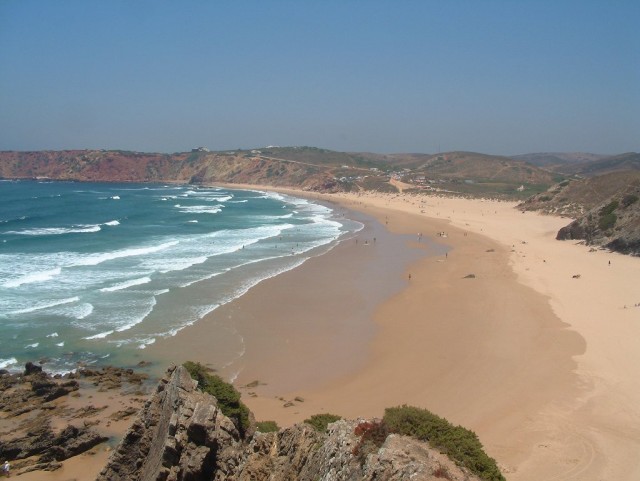littoral
THE WORD LITTORAL comes from the Latin root littus, or “seashore.” The littoral zone of a lake or ocean refers to the shallow waters closest to shore. In lakes, this is the zone dropping from the shoreline to roughly 10 ft (3 m) deep where there is enough sunlight for rooted plants to exist. Only in lakes with strong wave action will the littoral zone have algae instead of rooted plants.
Since the littoral zone is the interface between the lake and the surrounding watershed, it receives and accumulates sediment and nutrients that can support a wide variety of plants and animals. Plants include emergent wetland vegetation to submergent plants that may or may not reach the lake surface. This vegetation provides nutrients and habitat for fishes, birds, amphibians, invertebrates, and zooplankton.

Because of tides and wave action, the littoral zone of an ocean is subdivided into many parts. The supralittoral zone (spray zone) is found above the high tide mark up to the point that ocean spray cannot reach. This area usually receives only ocean spray, except for very high tides or storm surges that can inundate it. The intertidal littoral zone is bordered by the high and low tide marks. The sublittoral zone starts at the low tide mark and goes out to roughly 650 ft (200 m) deep, which is the average depth of the edge of the continental shelf. Numerous species live in these zones, each adapted to the abundance and presence of water they receive each day.
Littoral zones are the interface between land and water, and so they are very productive, meaning they support many plants and animals. However, these same areas are also easily altered by human development or pollution. For example, more people in the UNITED STATES are building homes on the remaining edges of lakes and rivers. Disturbing the soil to grade the lot and build the house causes erosion, which moves sediment into the water. Often, people will dump a load of sand on the littoral zone so that they don't have to walk through plants to go swimming and so it will look neater. Piers built off of these lots can also damage the plants in the littoral zone. As houses age, septic systems start to fail and this nutrient-rich pollution moves laterally into the water, promoting eutrophication. Polluted runoff from driveways and lawns can also impair the waterways.
Coastlines in every country have been feeling additional pressures from growing cities. The more human activity near a coastline results in more damage to the littoral zone. In wealthier areas, beach replenishment (dumping new sand on the beach) buries the current plants and animals, and the building of seawalls and groins to protect one beach will disturb currents to more seriously erode the next unprotected beach downcurrent. The major problem, however, is pollution. Sewer pipes and polluted rivers both dump myriad pollutants into the littoral and sublittoral zones, damaging the life forms there.
Sometimes people hear about this type of pollution when local health departments close down shellfish beds after sewage pollution has been high (because of storm sewer overflows or treatment plant malfunctions). Similarly, each year more beachgoers arrive to find beaches closed where water quality monitoring has detected pathogens, particularly after rain events. Surfers on the west coast of the UNITED STATES have long complained of intestinal sickness and skin sores after spending time in the water near sewage and creek outfalls. There is increasing pressure on coastal cities to repair and upgrade their aging treatment facilities to solve this problem.
Other laws now prevent ocean liners from dumping their sewage (treated or not) near shore, and only to dump treated sewage many miles out to sea. In some countries, laws require that ships not dump their waste oil or oily bilgewater close to shore or that only double-hulled oil tankers may enter port. Degrading littoral zones, particularly along oceans, damages habitat that marine and shorebird animals need, thus reducing this common resource both regionally and globally. The LAW OF THE SEA expects that signatories respect and protect these areas, but oftentimes little or no protection exists.